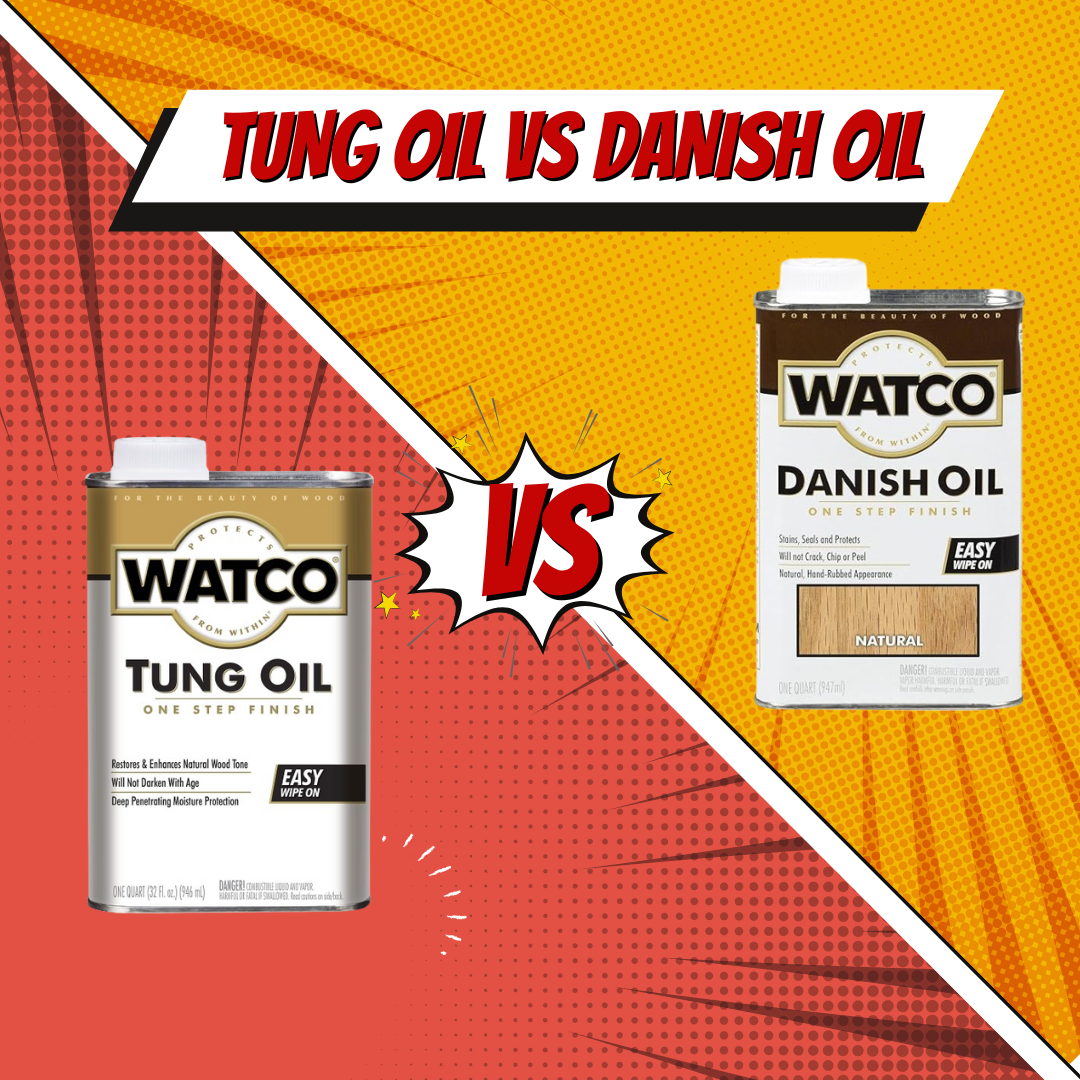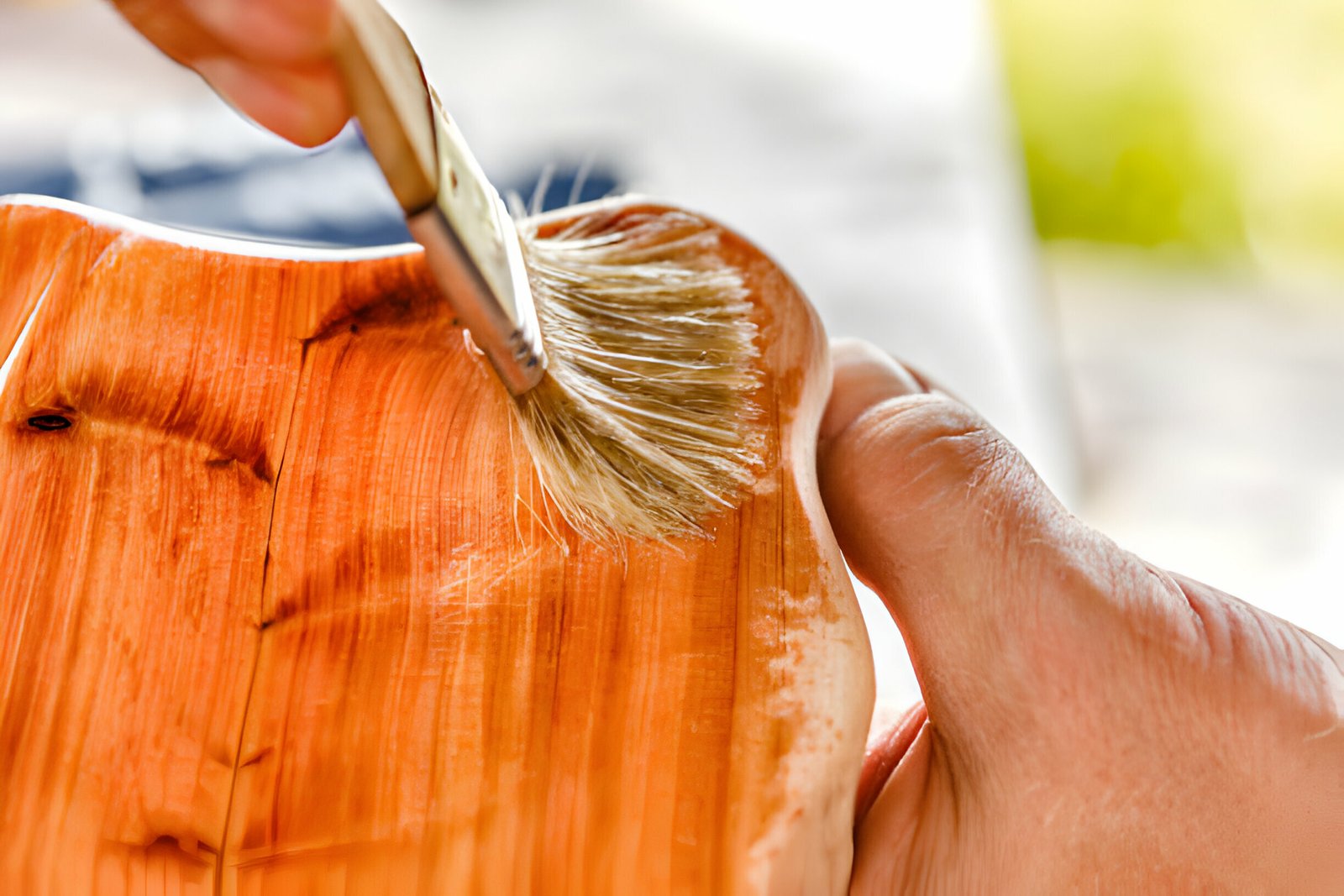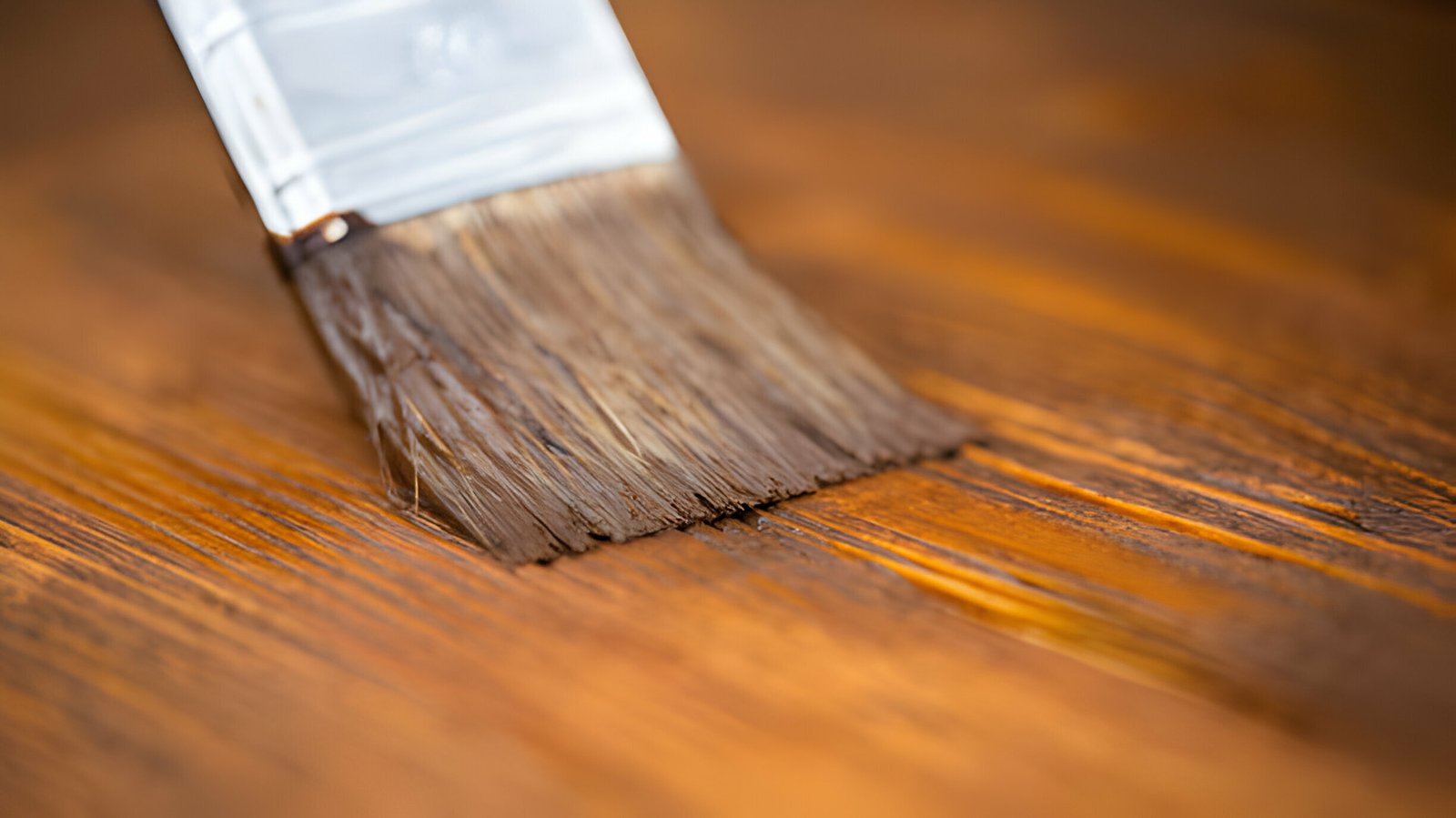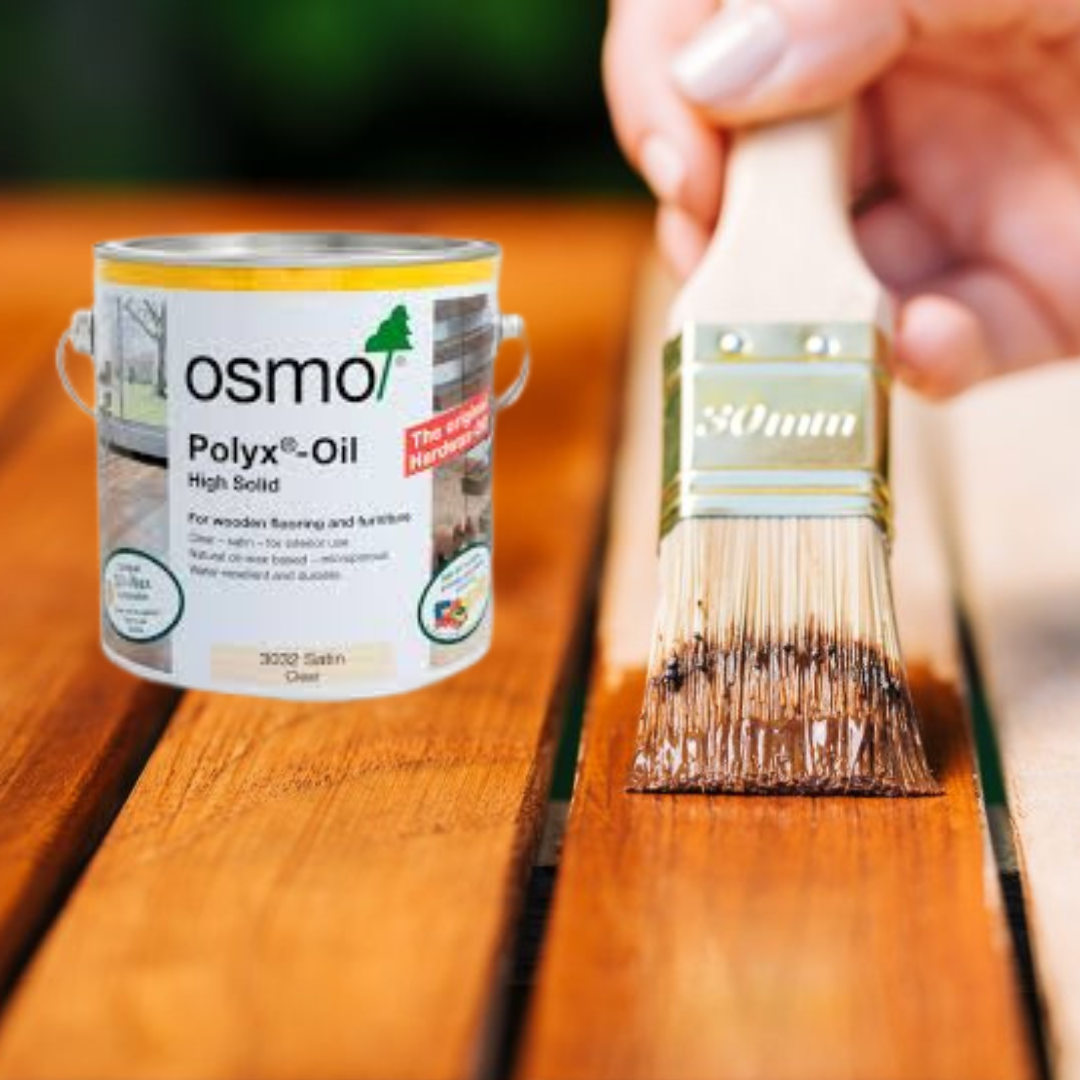Tung Oil vs Danish Oil: Understanding the Differences
In the world of woodworking and furniture finishing , you’ve got plenty of options to treat and safeguard wood surfaces. Among craftsmen and DIY fans, two top picks are tung oil and Danish oil. They’re both great for finishing wood, but each has its own unique traits and best uses. This article will dive into the comparison between tung oil vs Danish oil, discussing their properties, ideal uses, and what to think about when picking between the two.
Composition and Origin of Tung Oil & Danish Oil
Tung oil and Danish oil are both well-known wood finishes appreciated for their ability to enrich the look and safeguard the integrity of wood surfaces. Understanding where they come from and what they’re made of can give valuable insights into how they work and where they’re best used.
Tung Oil Composition and Origin

1.1 Composition
Tung oil, also known as China wood oil, is extracted from the seeds of the tung tree (Aleurites fordii). It’s a natural drying oil that forms a tough, water-resistant finish as it reacts with air. Pure tung oil doesn’t contain any additives or solvents, making it an environmentally friendly choice for finishing wood.
1.2 Origin
The tung tree is native to East Asia, particularly China and its neighboring regions. Throughout history, tung oil has served various purposes, from wood finishing to waterproofing and even traditional medicine. Its popularity in woodworking comes from its remarkable durability and its ability to bring out the innate beauty of wood.
Danish Oil Composition and Origin
2.1 Composition
Danish oil is a blend of different ingredients, typically including tung oil, linseed oil, and mineral spirits. The exact mix can vary from one manufacturer to another, but Danish oil generally includes a combination of oils and resins that offer both deep penetration and surface protection. Some formulations might also contain drying agents to speed up the curing process.
2.2 Origin
The term “Danish oil” originated from Danish woodworkers who developed the formula for this versatile wood finish. While its precise origins may vary, Danish oil has become widely embraced in woodworking and furniture restoration circles. By blending various oils and resins, Danish oil creates a durable, attractive finish for wood surfaces.
Application of Tung Oil and Danish Oil
When it comes to applying wood finishes, both tung oil and Danish oil are fantastic choices for enhancing the look and safeguarding the integrity of wood surfaces. Knowing how to apply each oil correctly is crucial for achieving the best results.
Tung Oil Application
1.1 Preparation
Before applying tung oil, make sure the wood surface is clean, dry, and free of any dust or debris. Lightly sand the surface to eliminate imperfections and open up the wood pores for better absorption.
1.2 Application Method
Use a brush, cloth, or foam applicator to apply tung oil, following the direction of the wood grain.
Let the first coat soak into the wood for 15-20 minutes, then wipe off any excess oil with a clean cloth.
Repeat this process for additional coats, usually applying 2-4 coats for optimal protection.
Allow each coat to dry completely before applying the next, typically waiting 24 hours between coats.
Sand lightly between coats to smooth out any raised grain or imperfections.
1.3 Curing and Maintenance
Tung oil needs time to cure fully, usually around 7-10 days per coat, depending on the temperature and humidity.
After curing, lightly buff the surface with a soft cloth to enhance its sheen.
Periodically reapply tung oil as needed to maintain the finish and protect the wood surface.
Danish Oil Application
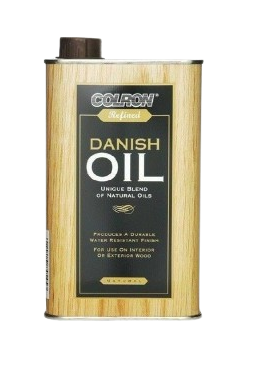
2.1 Preparation
Prepare the wood surface by lightly sanding it and removing any dust or debris. Danish oil can be applied to both bare wood and previously finished surfaces.
2.2 Application Method
Apply Danish oil generously with a brush, cloth, or sponge, ensuring even coverage over the entire surface.
Let the oil soak into the wood for 15-20 minutes, then wipe off any excess with a clean cloth.
For deeper penetration and added protection, apply more coats of Danish oil as necessary.
Danish oil dries relatively quickly, usually within 4-6 hours, depending on environmental conditions.
2.3 Curing and Maintenance
Danish oil cures faster than tung oil, typically within 24-48 hours, but it may take up to a week to fully cure.
After curing, lightly buff the surface with a soft cloth to achieve a smooth finish.
Regular maintenance might involve reapplying Danish oil to refresh the wood’s appearance and protection.
Both tung oil and Danish oil offer straightforward application processes, making it easy for woodworkers and DIY enthusiasts to achieve professional-quality finishes. Whether you prefer the natural durability of tung oil or the versatility of Danish oil, understanding how to apply them correctly is key to ensuring lasting beauty and protection for your wood surfaces.
Maintenance of Tung Oil and Danish Oil Finishes
Maintaining the beauty and protective qualities of wood finishes like tung oil and Danish oil is crucial for the longevity of wood surfaces. By following proper maintenance practices, you can preserve the finish’s appearance and integrity, ensuring your furniture and woodworking projects stay in top condition for years.
Tung Oil Finish Maintenance
1.1 Regular Cleaning
Use a damp cloth or mild soap solution to clean the surface and remove dust, dirt, and grime.
Avoid harsh chemicals or abrasive cleaners that could harm the finish.
1.2 Reapplication
Periodically reapply tung oil to rejuvenate the protective layer and uphold the finish’s shine.
Depending on wear and exposure levels, consider recoating tung oil finishes every few years.
1.3 Buffing
After reapplication, lightly buff the surface with a soft cloth to enhance the sheen and smooth out any flaws.
Use a gentle, circular motion for an even finish.
Danish Oil Finish Maintenance
2.1 Routine Care
Regularly wipe the surface with a soft, dry cloth to eliminate dust and debris.
To prevent damage, avoid placing hot or wet items directly on the surface.
2.2 Spot Cleaning
For minor stains or spills, gently blot the area with a clean, damp cloth.
Avoid vigorous scrubbing, as it could harm the finish.
2.3 Reapplication
Depending on usage and exposure, Danish oil finishes may require reapplication every 1-2 years to maintain optimal protection.
Ensure the surface is clean and dry before adding more coats of Danish oil.
General Maintenance Tips
Shield wood surfaces from prolonged exposure to direct sunlight, as UV rays can cause fading and deterioration.
Use coasters or placemats to safeguard against heat, moisture, and scratches.
Regularly inspect the finish for signs of wear or damage, addressing any issues promptly to prevent further harm.
Proper maintenance is key to preserving the beauty and integrity of tung oil and Danish oil finishes. By adhering to these maintenance tips and performing routine care, you can keep your wood surfaces looking their best for years to come. Whether you prefer the natural luster of tung oil or the versatile protection of Danish oil, regular upkeep will extend the life of your wood finishes and enhance the overall aesthetics of your woodworking projects.
Environmental Impact of Tung Oil and Danish Oil
As environmental sustainability awareness increases, understanding the environmental impact of various products becomes crucial. Tung oil and Danish oil, popular wood finishes, have different environmental footprints due to their composition and manufacturing methods.
Tung Oil
1.1 Renewable Resource
Derived from tung tree seeds (Aleurites fordii), tung oil is renewable, typically grown in managed plantations without contributing to deforestation.
1.2 Minimal Processing
Tung oil extraction usually involves simple methods that reduce environmental impact. Pure tung oil contains no additives or solvents, making it eco-friendly.
1.3 Eco-Friendly Properties
Tung oil is biodegradable and non-toxic, posing minimal risk to the environment and human health. Its natural drying process eliminates the need for additional chemical agents, further reducing environmental harm.
Danish Oil
2.1 Synthetic Additives
Some Danish oil formulations may contain synthetic additives or solvents to enhance performance and drying speed. While eco-friendly options exist, others may contribute to pollution and environmental harm.
2.2 Manufacturing Processes
The production of Danish oil involves various processes like blending and packaging, which may generate waste and emissions. Environmental impact varies depending on the manufacturer’s practices.
Environmental Considerations
3.1 Sustainable Sourcing
Opt for tung oil or Danish oil sourced from responsibly managed plantations to ensure sustainable practices. Look for certifications like Forest Stewardship Council (FSC) or Rainforest Alliance.
3.2 Eco-Friendly Alternatives
Explore natural, plant-based oil alternatives like linseed or walnut oil, which offer similar protective qualities with potentially lower environmental impact.
While both tung oil and Danish oil are effective wood finishes, their environmental impacts differ. Tung oil, with its renewable sourcing and minimal processing, is generally considered more eco-friendly. By choosing sustainably sourced products and considering alternatives, consumers can reduce the environmental impact of wood finishing and support a sustainable future.
Cost Comparison: Tung Oil vs. Danish Oil
When considering wood finishing options, cost plays a significant role for both professional woodworkers and DIY enthusiasts. Tung oil and Danish oil are both popular choices, but they differ in terms of cost due to factors like availability, quality, and application needs.
Tung Oil
1.1 Price Range
The cost of tung oil can vary widely based on factors such as purity, brand, and packaging size.
Pure tung oil tends to be pricier as it undergoes minimal processing and lacks additives.
1.2 Application Costs
Tung oil often requires multiple coats for optimal protection, potentially increasing application costs.
However, its long-term durability and low maintenance needs may balance out initial expenses.

Danish Oil
2.1 Price Range
Danish oil is generally more budget-friendly than pure tung oil, often containing a mix of oils and additives.
Prices may differ depending on brand, formulation, and ingredient quality.
2.2 Application Costs
Danish oil may need fewer coats compared to tung oil, potentially reducing application expenses.
Yet, additional costs may arise if extra coats are necessary to achieve the desired finish or level of protection.
Cost Considerations
3.1 Quantity Needed
Factor in the project size and the amount of oil required to cover the surface adequately.
Larger projects might demand more oil, increasing overall costs irrespective of oil type.
3.2 Long-Term Value
Consider the durability, maintenance, and aesthetic appeal of each finish over time.
While tung oil may have a higher initial cost, its durability and longevity may offer better long-term value. Danish oil, though cheaper upfront, might require more frequent reapplication and upkeep.
The cost comparison between tung oil and Danish oil hinges on upfront prices, application costs, and long-term value. While tung oil may seem pricier initially, its lasting performance and minimal maintenance could make it a better investment. Conversely, Danish oil’s lower initial cost might be appealing, but its need for more frequent reapplication could offset the savings.
Ultimately, when choosing between tung oil and Danish oil, consider factors beyond cost, such as desired finish, durability, and project budget.
Suitability of Tung Oil and Danish Oil for Different Projects
Choosing the appropriate wood finish is crucial for achieving desired outcomes in various woodworking projects. Tung oil and Danish oil are both popular choices, each with its distinct properties and applications. Understanding which projects each oil is suitable for can assist woodworkers and DIY enthusiasts in making informed decisions.
Tung Oil
1.1 Suitable Projects
Indoor Furniture: Tung oil is ideal for indoor furniture like tables, chairs, and cabinets. It enhances the wood’s natural beauty while providing robust protection against scratches and moisture.
High-Traffic Areas: Its exceptional durability makes tung oil perfect for high-traffic areas such as kitchen countertops and flooring, enduring wear and tear effectively.
Fine Woodworking: Tung oil is often preferred for fine woodworking projects where showcasing the wood’s natural beauty is paramount. Its deep penetration and ability to enhance grain patterns highlight craftsmanship.
Danish Oil
2.1 Suitable Projects
Indoor and Outdoor Furniture: Danish oil is versatile, suitable for both indoor and outdoor furniture. Its blend of oils and resins offers reliable protection against moisture and UV damage, making it suitable for exterior applications too.
Wood Turning: Commonly used in woodturning projects like bowls, vases, and pens, Danish oil’s easy application and quick drying time are advantageous for projects requiring swift turnaround.
Beginner Projects: Danish oil’s forgiving nature and ease of application make it popular for beginner or DIY projects, offering a user-friendly option for those new to woodworking.
Considerations for Choosing
3.1 Desired Finish: Consider the desired finish—whether natural, matte, or glossy. Tung oil tends to provide a richer finish, while Danish oil offers a satin-like sheen.
3.2 Durability Requirements: Assess the project’s durability needs, factoring in wear and tear, moisture exposure, and environmental conditions. Tung oil typically offers superior durability compared to Danish oil.
3.3 Application Ease: Consider ease of application and drying time. Danish oil is favored for quick turnaround projects or beginners due to its simpler application process.
Both tung oil and Danish oil offer unique advantages and suit a variety of woodworking projects. Tung oil excels in indoor furniture, high-traffic areas, and fine woodworking for its durability and natural appearance. Danish oil’s versatility makes it suitable for indoor/outdoor furniture, woodturning, and beginner projects, offering ease of application and protection against the elements.
Understanding the suitability of tung oil and Danish oil for different projects, along with considerations such as desired finish, durability, and application ease, empowers woodworkers to select the right wood finish for their specific needs.
Pros and Cons of Tung Oil and Danish Oil Wood Finishes
Tung oil and Danish oil are favored choices for wood finishing, each presenting its own advantages and drawbacks. Understanding these pros and cons can assist woodworkers and DIY enthusiasts in making informed decisions when selecting the appropriate product for their projects.
Tung Oil
Pros:
Natural Appearance: Tung oil enhances wood’s innate beauty, accentuating grain patterns and colors. It imparts a warm, luxurious finish that deepens with successive coats, resulting in visually appealing outcomes.
Exceptional Durability: Tung oil boasts superior durability, resisting scratches, moisture, and heat effectively. It forms a hard, water-resistant layer that endures wear and tear well, making it suitable for high-traffic areas and outdoor furniture.
Low Maintenance: Once cured, tung oil demands minimal upkeep. Periodic reapplication can revive the protective layer and sustain the finish’s sheen, but overall maintenance remains relatively simple.
Cons:
Long Drying Time: Tung oil typically necessitates extended drying periods compared to other wood finishes, requiring patience between coats. Each coat may take several days to weeks to fully cure, extending the finishing process.
Potential Strong Odor: Some individuals may find the odor of tung oil off-putting during application and curing. Proper ventilation is essential to minimize exposure to fumes and ensure a comfortable work environment.
Danish Oil
Pros:
Versatile Application: Danish oil is adaptable and suitable for a broad array of projects, encompassing indoor and outdoor furniture, woodturning, and beginner endeavors. Its ease of application and forgiving nature make it popular among DIY enthusiasts.
Fast Drying Time: Danish oil dries comparatively swiftly compared to tung oil, permitting quicker turnover between coats. This characteristic renders it ideal for projects necessitating a speedier finishing process or for users with time constraints.
Good Protection: Danish oil furnishes commendable protection against moisture, stains, and UV damage. Its blend of oils and resins penetrates deeply into the wood surface, establishing a durable, long-lasting finish.
Cons:
Less Natural Appearance: Danish oil may not amplify wood’s natural beauty as effectively as tung oil. Although it offers solid protection, some users may prefer the deeper, richer finish achieved with tung oil.
Potential Additives: Depending on the formulation, Danish oil might contain synthetic additives or solvents that emit potentially harmful fumes during application. Users should opt for high-quality, eco-friendly products to mitigate environmental impact.
Both tung oil and Danish oil possess distinctive strengths and weaknesses, rendering them suitable for various woodworking projects. Tung oil provides a natural appearance and outstanding durability but entails longer drying time and may produce strong odors. Danish oil, on the other hand, is versatile and easy to apply, with rapid drying time and solid protection, although it may lack the depth of finish achieved with tung oil and could contain potentially harmful additives.
By assessing the pros and cons of each wood finish and considering factors such as desired appearance, durability requirements, and application preferences, woodworkers can choose the appropriate product to realize their desired outcomes.
Customer Reviews and Recommendations for Tung Oil and Danish Oil
Customer reviews and recommendations are invaluable resources for individuals seeking guidance in selecting wood finishes like tung oil and Danish oil. By examining the experiences and feedback of users, potential buyers can gain insights into the performance, application, and overall satisfaction with these products.
Tung Oil Reviews
Positive Feedback:
Enhanced Appearance: Many users laud tung oil for its capacity to enrich the natural beauty of wood, accentuating rich colors and intricate grain patterns. Customers frequently remark on the warm and lustrous finish achieved with tung oil.
Durable Protection: Numerous reviewers emphasize the exceptional durability of tung oil, noting its resilience against scratches, moisture, and heat. Customers value the long-lasting protection it affords their furniture and woodworking endeavors.
Low Maintenance: Several users commend tung oil for its minimal maintenance requirements post-application. Routine reapplication is straightforward, with minimal upkeep necessary to preserve the finish’s integrity.
Negative Feedback:
Long Drying Time: Some customers express frustration with the protracted drying period of tung oil, particularly between coats. Waiting for each coat to fully cure can extend the finishing process, resulting in project delays.
Strong Odor: A few reviewers mention the potent odor emitted by tung oil during application and curing. Although the scent dissipates over time, it can be bothersome for users sensitive to chemical odors.
Danish Oil Reviews
Positive Feedback:
Versatility: Many customers value the versatility of Danish oil, noting its suitability for diverse projects. From indoor furniture to woodturning and beginner endeavors, Danish oil offers ease of application and satisfactory results.
Fast Drying Time: Numerous reviewers praise Danish oil for its rapid drying time, facilitating swift turnover between coats. This attribute is particularly advantageous for users with time constraints or projects necessitating expedited finishing.
Good Protection: Several users commend Danish oil for its capacity to provide dependable protection against moisture, stains, and UV damage. The blend of oils and resins penetrates deeply into the wood surface, ensuring durability and longevity.
Negative Feedback:
Less Natural Appearance: Some customers observe that Danish oil may not enhance the natural beauty of wood as effectively as tung oil. While it furnishes adequate protection, the finish may lack the depth and richness achieved with tung oil.
Chemical Additives: A few reviewers express reservations regarding the potential presence of synthetic additives or solvents in Danish oil formulations. Eco-conscious users prefer products with minimal environmental impact and fewer chemical additives.
Recommendations
Drawing from customer reviews and recommendations, here are some key takeaways:
For a Natural, Durable Finish: Tung oil is recommended for its enhanced appearance and exceptional durability, ideally suited for high-traffic areas and fine woodworking projects.
For Versatility and Quick Results: Danish oil is recommended for its versatility and swift drying time, suitable for a broad spectrum of indoor and outdoor projects with reliable protection against environmental factors.
Prior to purchase, customers should carefully evaluate their specific needs, preferences, and project requisites to select the wood finish that aligns best with their objectives.
Conclusion
In conclusion, both tung oil and Danish oil present unique advantages and applications in woodworking. Whether your focus is on durability, aesthetics, or environmental impact, having a clear understanding of the characteristics of each oil will empower you to make an informed decision for your upcoming project.
FAQs
Q1: Is tung oil or Danish oil better for outdoor furniture?
A1: Tung oil is generally preferred for outdoor furniture due to its superior durability and water resistance.
Q2: Can tung oil be used on food surfaces such as cutting boards?
A2: Yes, tung oil is food-safe once fully cured, making it a popular choice for sealing cutting boards and wooden utensils.
Q3: Does Danish oil darken wood over time?
A3: Danish oil may darken wood slightly upon application but generally does not significantly change its appearance over time.
Q4: How long does tung oil take to dry between coats?
A4: Tung oil typically requires 24 to 48 hours to dry between coats, depending on temperature and humidity levels.
Q5: Is Danish oil suitable for refinishing old furniture?
A5: Yes, Danish oil can be used to refinish old furniture, providing a fresh, protective layer while enhancing the wood’s appearance.
Also read: Teak Oil vs Tung Oil: Which Wood Finish is Best for You?

